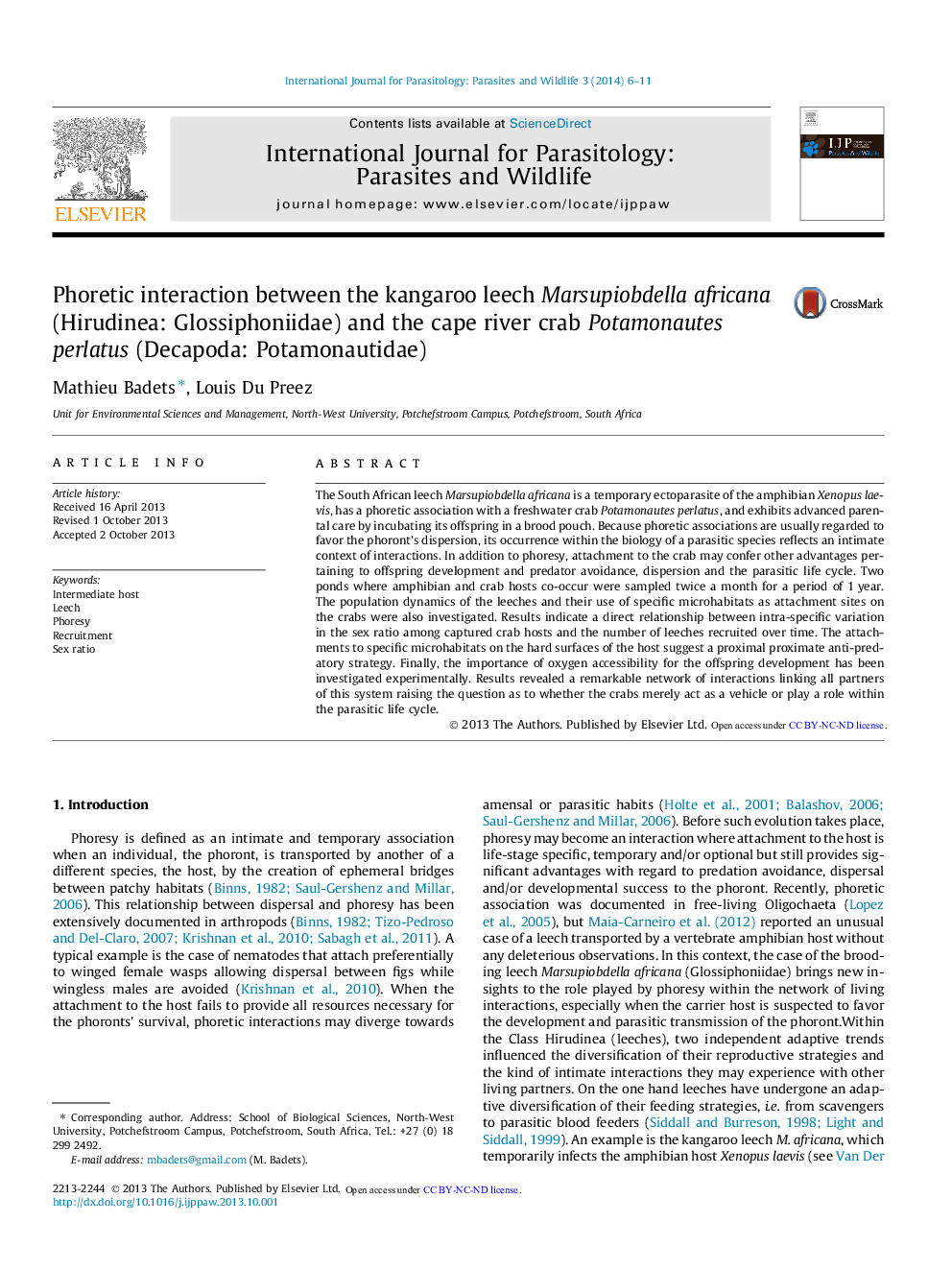| کد مقاله | کد نشریه | سال انتشار | مقاله انگلیسی | نسخه تمام متن |
|---|---|---|---|---|
| 2055239 | 1075736 | 2014 | 6 صفحه PDF | دانلود رایگان |

• A phoretic interaction between a blood feeding leech and a crab host is depicted.
• Over one year, 462 crabs were examined for the number of transported leeches.
• Variations in the sex ratio of crabs captured correlate with phoront’s recruitments.
• Leeches aggregate on specific micro-habitats of the crab shell.
• Detachment from the crab shell occurred in the lack of oxygen dissolved in the water.
The South African leech Marsupiobdella africana is a temporary ectoparasite of the amphibian Xenopus laevis, has a phoretic association with a freshwater crab Potamonautes perlatus, and exhibits advanced parental care by incubating its offspring in a brood pouch. Because phoretic associations are usually regarded to favor the phoront’s dispersion, its occurrence within the biology of a parasitic species reflects an intimate context of interactions. In addition to phoresy, attachment to the crab may confer other advantages pertaining to offspring development and predator avoidance, dispersion and the parasitic life cycle. Two ponds where amphibian and crab hosts co-occur were sampled twice a month for a period of 1 year. The population dynamics of the leeches and their use of specific microhabitats as attachment sites on the crabs were also investigated. Results indicate a direct relationship between intra-specific variation in the sex ratio among captured crab hosts and the number of leeches recruited over time. The attachments to specific microhabitats on the hard surfaces of the host suggest a proximal proximate anti-predatory strategy. Finally, the importance of oxygen accessibility for the offspring development has been investigated experimentally. Results revealed a remarkable network of interactions linking all partners of this system raising the question as to whether the crabs merely act as a vehicle or play a role within the parasitic life cycle.
Figure optionsDownload as PowerPoint slide
Journal: International Journal for Parasitology: Parasites and Wildlife - Volume 3, Issue 1, April 2014, Pages 6–11